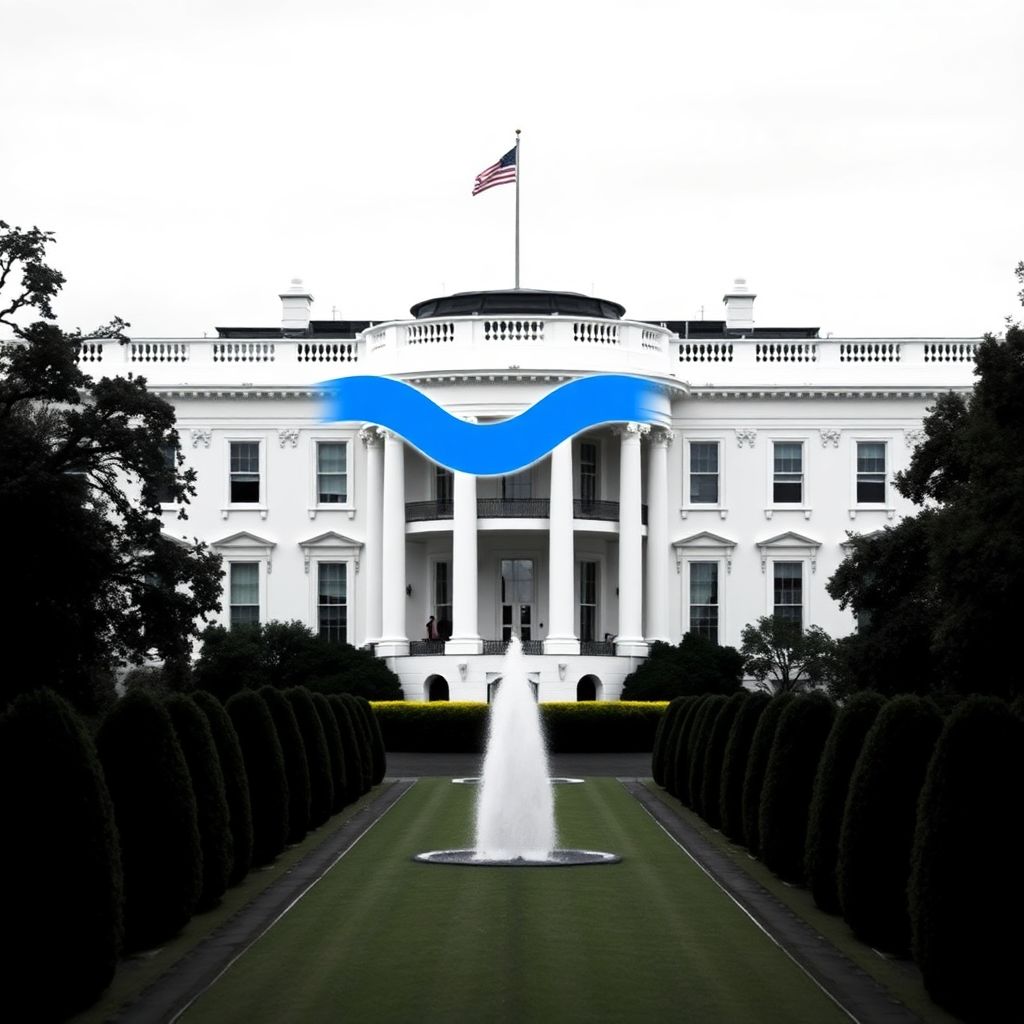Ripple Among Top Donors to White House Project as XRP Surges
Ripple has been named among the prominent contributors to a new White House ballroom project, a revelation that has invigorated the XRP community and coincided with a notable rally in the cryptocurrency’s price. The donor list, recently made public, includes major players not only from the crypto industry but also from the broader tech world. Ripple’s inclusion highlights its expanding influence in both political and financial spheres.
According to a post on X by crypto influencer Pumpius, the list of private donors funding the development of the White House ballroom under President Donald Trump’s leadership features several high-profile names. Ripple appears alongside other cryptocurrency giants such as Coinbase and Tether America. Additionally, the Winklevoss twins, founders of the Gemini exchange, are also confirmed contributors.
What makes this development particularly significant is Ripple’s alignment with tech powerhouses like Amazon, Google, Meta, and Palantir. This places the blockchain-based payment firm in a league with some of the most influential companies in the digital ecosystem. It’s also worth noting that Ripple has a history of political engagement; the firm previously contributed nearly $5 million to Trump’s inauguration and Ripple’s Chief Legal Officer, Stuart Alderoty, made a personal donation to Trump’s campaign in the prior year.
The donation has sparked speculation about Ripple’s strategic intentions, particularly as the company continues to navigate the complex regulatory environment in the U.S. Under the Trump administration, Ripple has seen several positive developments. Chief among them was the dismissal of the long-running SEC lawsuit against the firm, a legal battle that had cast a shadow over XRP for years. The case’s resolution, attributed in part to clearer regulatory guidance from the new administration, has opened the door for a resurgence in Ripple’s U.S. operations.
CEO Brad Garlinghouse confirmed that Ripple has significantly expanded its presence domestically since the shift in political leadership. In 2024 alone, the company has finalized three major acquisitions, including the high-profile purchase of prime broker Hidden Road for $1.25 billion. This acquisition is seen as a key move to enhance Ripple’s payment infrastructure, which relies heavily on XRP as a liquidity bridge.
XRP has responded positively to these developments. At the time of writing, the token is trading at approximately $2.55, representing a more than 5% gain within a 24-hour period. This upward movement is particularly notable given the broader market’s stagnation, with Bitcoin trading sideways and most altcoins showing little to no momentum.
Investor sentiment appears to have been further buoyed by Garlinghouse’s recent remarks on X, where he reaffirmed XRP’s central role in Ripple’s long-term vision of building an “internet of value.” He urged the XRP community to “lock in,” signaling confidence in the asset’s future trajectory.
The market’s bullish response also reflects growing optimism about Ripple’s strategic direction and its ability to maintain strong ties with influential political figures. Trump’s previous mention of XRP as a potential component of a national digital asset reserve has only fueled speculation about Ripple’s role in future government-backed crypto initiatives.
Beyond political connections, Ripple continues to expand its global footprint. The company has made significant inroads in the Asian payments market by leveraging the XRP Ledger to offer faster and cheaper cross-border transactions. This growth in Asia has helped offset some of the challenges it faced in the U.S. during the SEC lawsuit.
Moreover, XRP’s options market has seen explosive growth. In less than six months, the total volume of options contracts based on XRP has surpassed $26 billion, highlighting increasing institutional interest and a maturing derivatives market for the token.
Despite these gains, some analysts believe that the market is still underestimating XRP’s potential. One prominent crypto pundit argued that investors remain overly cautious, even as multiple indicators point toward a strong accumulation phase. Analysts suggest that if Ripple continues to secure regulatory clarity and make strategic acquisitions, XRP could see further price appreciation in the coming quarters.
As Ripple strengthens its political alliances and expands its technological capabilities, XRP stands to benefit not just from speculative interest but from real-world utility. Its use in remittances, institutional settlement, and liquidity provisioning positions it uniquely among digital assets.
In summary, Ripple’s inclusion in the White House donor list is more than a symbolic gesture—it marks a deepening relationship with political power structures that could influence the regulatory framework for digital assets in the U.S. With legal hurdles behind it, strategic acquisitions underway, and XRP regaining momentum, Ripple appears to be positioning itself as a dominant force in the next chapter of crypto finance.

